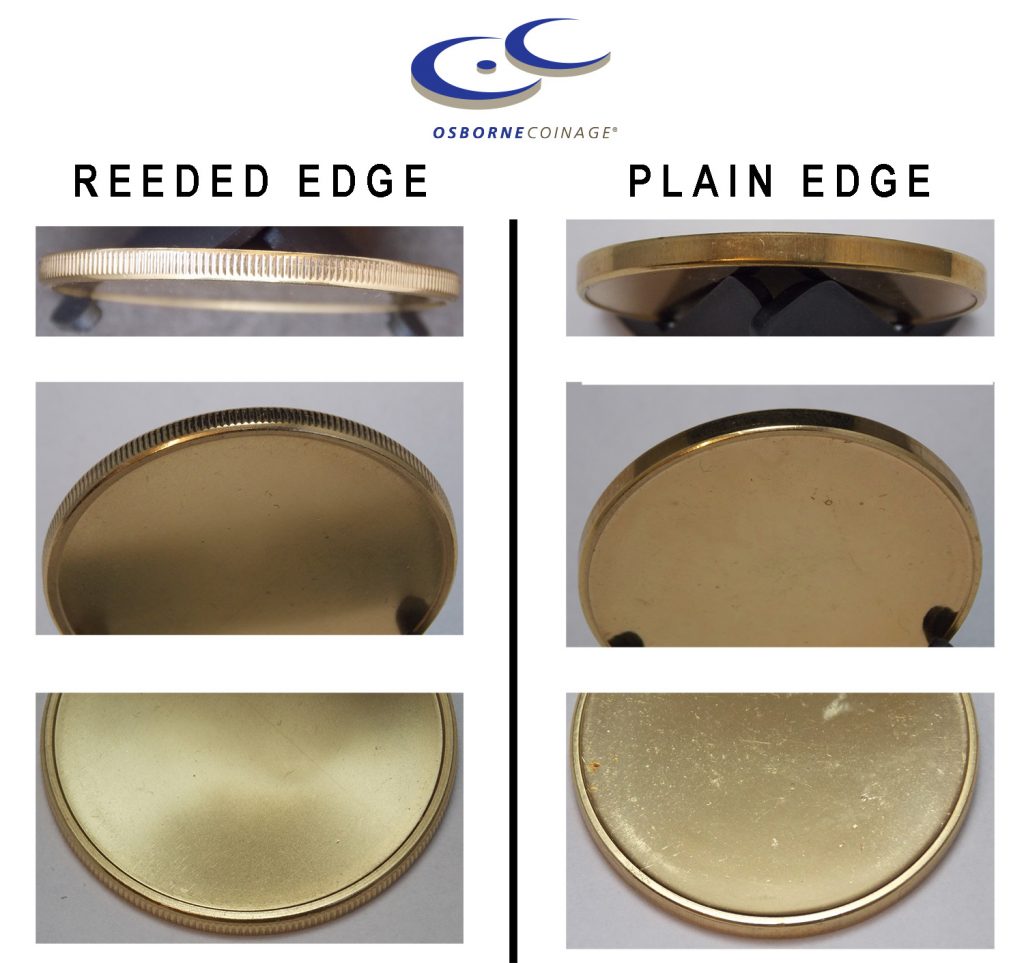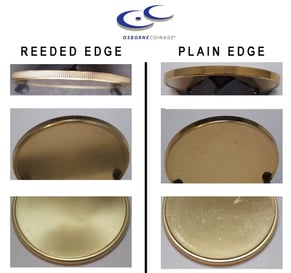1 min read
The Difference Between Reeded Edges and Plain Coin Edges
![]() Gibson Olpp
:
Oct 27, 2020 10:31:32 AM
Gibson Olpp
:
Oct 27, 2020 10:31:32 AM

Learn the Difference Between Plain and Reeded Edge Coins
 All coins have an edge. If you pull out the change in your pocket or wallet, you'll notice that some of the edges are smooth, like on a penny or a nickel, and some have little ridges (or reeds) like on a dime or a quarter.
All coins have an edge. If you pull out the change in your pocket or wallet, you'll notice that some of the edges are smooth, like on a penny or a nickel, and some have little ridges (or reeds) like on a dime or a quarter.
Custom coins are no different. When we mint coins, a blank metal disc is dropped into a collar. A collar is a ring that keeps the metal from squirting out the sides with it is struck with the tons of force needed to produce a die struck coin. The inside edge of the collar can be smooth or have ridges.
When the blank is squeezed between 2 dies, the metal is forced up in the dies (to create the image) and out into this ring, making the edge of the coin take on the shape cut into the collar.
How Making a Coin is Similar to Making a Waffle
Think about it similar to a waffle press - the batter takes on the shape of the press - whether it's the "standard" waffle you get at the Waffle House, or one shaped like a death star or Mickey Mouse. Sometimes you put too much batter in and it oozes out the sides. A collar contains the metal and also gives it an edge - hence the reeded or plain.
Are There Other Options?
Making it even more complicated - there is something called an "open reed", which has reeds 75% of the way around the coin and then a smooth section for the remaining 25%. This open reed allows an area when a coin can be edge numbered (0001, 0002, 0003 etc) or have words like .999 FS (.999 fine silver) stamped on it.
Whichever you choose, this is a no charge option. If you want a plain edge or a reeded edge, there is no additional cost.
Talk to your salesperson about what is right for you.
Interested in seeing more information about custom coins?
Here are some additional resources:
- How Small is Too Small When it Comes to Coin Text Size? A short introduction to font size on coins.
-
How to tell the difference between page turn and coin turn? Depending on how you turn it, the image is upside down or right side up. What's up with that?
-
How Dies are Used in the Coin Making Process? Dies are an integral part of coin making. Discover how in this blog.
- See How Custom Coins are Made - a video tour of the oldest private mint in America
.png)
